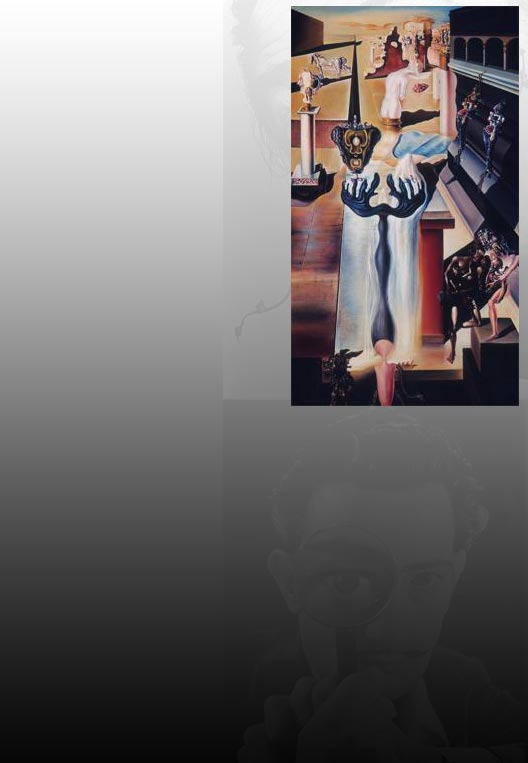Salvador Dali was not the first one to bear his name. Before he was born his parents had had another son, one they named Salvador Dali. After the first son’s untimely death and the famous artist’s birth, Dali’s parents decided to give him the same name as the child they had lost. This decision affected him deeply throughout his childhood, a childhood filled with his frequent contemplations of death. His relationship with his mother was a large part of many of his works. From his childhood and through the rest of his life, Dali struggled with his issues with his mother. As he depicted in many of his works, the painter explored the idea that a mother's relationship with her son is a predatory one. In particular, the painting “
The Enigma of My Desire, My Mother” is a good example of his relationship with his mother. In this painting, the main object seems to be a woman, with a distorted, ugly head atop a massive body. Her body seems able to devour, especially in the gaping womb area. The figure behind her in the distance seems trapped by her in the vast desert.
The images that Dali chose to use in his paintings reflected his own conscious fears and desires. His paintings were often focused on physical manifestations of the subconscious dream world, taking a lot of his ideas from the written works of Sigmund Freud. As a result, his paintings often depicted his aforementioned feelings about the role mothers play and also many of the connected insecurities that a grown man possesses. In the painting "Invisible Man" The central focus is an object strongly resembling ovaries in place of where the large man's body would be. The man in the background, however, is partially transparent, fading into the background of the scene. He is overpowered by the ovaries, and they keep him from being the in the foreground of the painting. This invisible man mirrors Dali's insecurities about being repressed by his mother and her womanliness.







